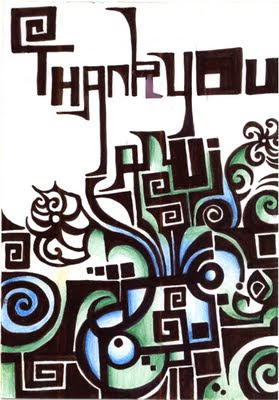What is it to be a Marxist?
Shubhalakshmi explained me in a very simple manner.
To believe that all conditions that we experience and that the way in which society is organized / structured; is due to a certain kind of means of production is a Marxist thought. The Marxist locates entire history in the materiality of life and the means of production. It is an ideology which bases values like morals, ethics and other social relations also on the material world. Thus, the thought is an extreme version of rationality which locates the cause and effect of all situations in the real physical world. To also understand every one as equal (the socialist thought) and to regard every one to have equal stake over every resource is another characteristic of a Marxist.
Thus a Marxist may not believe in the existence of God, since God is non-physical. God is an idea, would say a Marxist. That irrationalities are also a part of the modern world is still not a reason to believe in something extra-real. The Marxist theory probably doesnot regard the spiritual grounding of certain systems of thought. A majority of India still operates through its belief in rituals, customs, traditions and spiritual thoughts. Such systems of thought believe that life is not so much about the material, but the non-material. It emphasizes on the ideas of space, void, tantra, etc. - things that can not be explained simply.
***
Why did the prehistoric people paint in the deep dark recesses of the caves? (referring to a hunting act painting in the Lascaux caves)
She said:
It is a belief that the practice of drawing was an exercise in practicing the act of hunting. The pre historic people probably thought that the spirit of the animal is trapped in its image. So the production of the image was like rehearsing the act of hunting through the image. In deep recesses, one has to focus light on the painting. The darkness gave an opportunity to focus on the animal and the act (specific parts of the painting). The painting thus became a knowledge to be passed on. It became a cultural object of preserve.
(Now perhaps this won't be a marxist explanation for the cave painting...)
***
When a dot walks, it becomes a line
When a line walks, it becomes a plane.
-Paul Klee.
Shubhalakshmi explained me in a very simple manner.
To believe that all conditions that we experience and that the way in which society is organized / structured; is due to a certain kind of means of production is a Marxist thought. The Marxist locates entire history in the materiality of life and the means of production. It is an ideology which bases values like morals, ethics and other social relations also on the material world. Thus, the thought is an extreme version of rationality which locates the cause and effect of all situations in the real physical world. To also understand every one as equal (the socialist thought) and to regard every one to have equal stake over every resource is another characteristic of a Marxist.
Thus a Marxist may not believe in the existence of God, since God is non-physical. God is an idea, would say a Marxist. That irrationalities are also a part of the modern world is still not a reason to believe in something extra-real. The Marxist theory probably doesnot regard the spiritual grounding of certain systems of thought. A majority of India still operates through its belief in rituals, customs, traditions and spiritual thoughts. Such systems of thought believe that life is not so much about the material, but the non-material. It emphasizes on the ideas of space, void, tantra, etc. - things that can not be explained simply.
***
Why did the prehistoric people paint in the deep dark recesses of the caves? (referring to a hunting act painting in the Lascaux caves)
She said:
It is a belief that the practice of drawing was an exercise in practicing the act of hunting. The pre historic people probably thought that the spirit of the animal is trapped in its image. So the production of the image was like rehearsing the act of hunting through the image. In deep recesses, one has to focus light on the painting. The darkness gave an opportunity to focus on the animal and the act (specific parts of the painting). The painting thus became a knowledge to be passed on. It became a cultural object of preserve.
(Now perhaps this won't be a marxist explanation for the cave painting...)
***
When a dot walks, it becomes a line
When a line walks, it becomes a plane.
-Paul Klee.




























